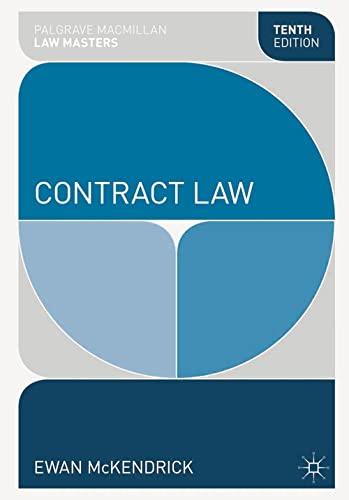Question
Mark Medoc is employed as the master vintner at Catawba Hills, a small winery in New York State. He has been experimenting with the fermentation
Mark Medoc is employed as the master vintner at Catawba Hills, a small winery in New York State. He has been experimenting with the fermentation process of red wine to produce more polyphenols. Polyphenols come from the pigment of the grapes and are the substance that causes red wine to be heart healthy. Polyphenols inhibit the production of peptides that contribute to the hardening of the arteries. Medoc reasons that if polyphenols are good for you, then more polyphenols will be even better. Medoc discovered in October of 2006 that if he added pieces of beef liver to the grapes, sugar, and yeast that typify the normal winemaking process, the resulting wine contained over twenty percent more polyphenols than wine produced without the beef liver. He has repeated the process a number of times and consistently achieves a twenty percent increase in polyphenols. He has graduate students from nearby Vinifera University working with him in the Catawba Hills laboratory as interns. They have replicated the experiment over and over and also achieve the same results. Other organic and chemical substances do not have any effect on the amount of polyphenols in the wine. It seems that beef liver is the substance that makes the difference.
In March 2007, Medoc attended the Little Old Winemakers annual conference in Napa Valley, California. He discussed with some of his fellow vintners (over glasses of Cabernet) the fact that he had been able to achieve an increase in polyphenols during fermentation. He revealed that beef liver was the ingredient, but was careful not to describe the process beyond that. Sherry Shiraz, a master vintner from a California winery, was a part of the discussion and she recommended that Medoc call his new wine HeartWine, to indicate its benefits for a healthy heart.
The students receive course credit for working with Medoc in his laboratory and, as with most internships, are supervised by Medoc and their advisor at Vinifera University. They receive no monetary compensation for working in the Catawba Hills laboratory. In September of 2006, with Medoc's permission, the student interns entered the HeartWine idea in a business plan competition sponsored by Vinifera University. Medoc encouraged the students to submit a plan because he thought they would be able to prepare financial forecasts and a marketing plan that he could not, but that would be useful to him later. The competition was judged by local business leaders and venture capitalists. The students' plan did not win the top prize ($10,000 in start-up funds), but received an honorable mention for creativity and "promise."
Meanwhile, Medoc was working late one night in the fermentation room at Catawba Hills when he heard noises in his laboratory. He went to investigate and came upon a stranger who was opening file cabinets. Medoc confronted the stranger, who claimed to be a friend of one of the interns. He said he had been dispatched to the office to try to find his friend's chemistry homework, which he believed he had mistakenly filed in a HeartWine file when he was working in the lab earlier in the day. Medoc was incredulous but didn't want any trouble, so he escorted the intruder out of the building after stern warnings about ever returning again.
Medoc is starting to get serious about commercializing HeartWine. He is not sure Catawba Hills is willing to, or can even support financially, the HeartWine process. He is contemplating taking the idea to larger wineries in New York, California, and France. He knows there is an abundance of information on the Web, in medical journals, and in the popular press about the health benefits of drinking red wine in moderation. He has collected information from the most highly regarded sources by downloading pages from the Web and photocopying medical journal and newspaper articles. He wishes to prepare information packet to take to other wineries as he promotes his idea.
It is now 2008. Before he goes any further, Medoc comes to you for advice about what preparations he should make and what options he has for commercializing the HeartWine process. Based on the above facts, set forth in a memo to Medoc what he can do and not do, what he should be careful about, what 6 pitfalls he is likely to face, what problems/opportunities he should anticipate, and how he should deal with them.
- How would you negotiate an agreement with Catawba Hills to settle the ownership issues with respect to the HeartWine process?
- How would you institute a trade secret protection program? How would you address the student interns, wineries and other investors Mark approaches with his idea in this trade secret protection plan?
- What are the trademark implications regarding the name HeartWine and Sherry Shiraz? What legal and ethical actions should be taken?
- Regarding the Information packet and all future messaging from the company, how should we protect HeartWine's and other's copyright interests? What plan would you put in place and how will it be effective across the organization?
- Are we forgetting anything? How can we future proof against other intellectual property concerns?
Step by Step Solution
There are 3 Steps involved in it
Step: 1

Get Instant Access to Expert-Tailored Solutions
See step-by-step solutions with expert insights and AI powered tools for academic success
Step: 2

Step: 3

Ace Your Homework with AI
Get the answers you need in no time with our AI-driven, step-by-step assistance
Get Started


